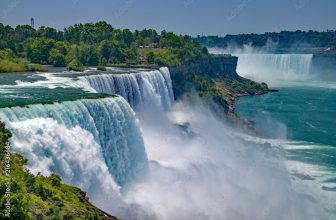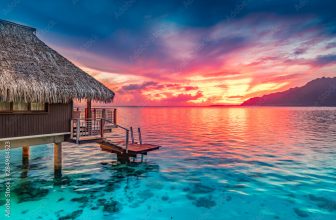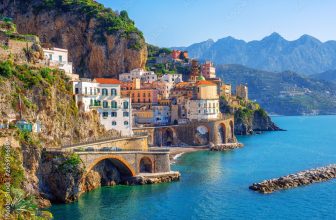
If you’re planning a trip to the Montana Rocky Mountains, consider visiting Glacier National Park. This 1,583 square mile park is filled with glacier-carved peaks and valleys. You can drive across the park along the famous Going-to-the-Sun Road, and hike or bike seventy miles of trails. Glacier National Park is home to diverse wildlife and an abundant amount of hiking trails. The park also offers cycling and backpacking.
UNESCO World Heritage Site
The UNESCO World Heritage List recognizes unique places in the world that are important for culture, science, or heritage. In the case of Glacier National Park, that means it is a protected area. To be eligible for inclusion on the list, sites must meet a set of specific criteria. Listed below are some of the criteria that are met by this park. While each of the parks has unique features, each also protects important species.
Waterton-Glacier International Peace Park, which comprises the two parks, was designated a UNESCO World Heritage Site in 1995. It was selected for its exceptional natural beauty and cultural importance. In addition to being designated a World Heritage Site, it is also the first International Peace Park. Glacier is one of the world’s most spectacular and unique landscapes, and it is the largest national park in the U.S.
UNESCO International Biosphere Reserve
The UNESCO International Biosphere Reserve in Glacer National Park has a unique designation that highlights the importance of the area’s biodiversity. In 1976, the park was designated under the Man and the Biosphere Programme of UNESCO, and its designation aims to conserve the diversity of biotic communities and species, foster ecological research, and add depth to the themes that are so central to the park. In addition, the Waterton Lakes National Park is also included in the Glacier Biosphere Reserve.
The UNESCO International Biosphere Reserve in Glacer National Park has over one million acres of protected land, with over 260 species of birds and 70 species of mammals. It also has over 700 miles of well-maintained trails and six National Historic Landmarks. Glacier National Park is a world heritage site, and combined with the adjacent Waterton Lakes National Park, it forms a unique ecosystem.
National Historic Landmark
If you love the outdoors, there is nothing quite like the majesty of Glacier National Park, where you can take in the scenery of the continental divide and drive the Going-to-the-Sun Road. The road, which was built in the early twentieth century, crosses the Continental Divide at Logan Pass and passes through every terrain found within the park. The road is so famous, in fact, that it was included on the National Register of Historic Places and was later named a National Historic Landmark.
Many buildings and structures in Glacier National Park are included in the National Register of Historic Places. These properties must be significant to our history or convey a unique sense of place. They must also be at least 50 years old. These are some of the reasons why Glacier National Park is considered an important destination for hiking, biking, and trail-riding. Listed properties are the most preserved and well-maintained in the country and should be included on any Glacier National Park itinerary.
734 miles of hiking trails
One recent adventurer made a record-breaking journey – he hiked all 734 miles of hiking trails in Glacier in a single season. Bramante, 33, from Bigfork, Montana, meticulously planned the entire undertaking and filmed the entire journey in photographs and videos. After the hike, he will package the media and sell it to other park visitors for educational purposes.
In Glacier National Park, you can enjoy scenic views from mountain peaks and rushing waterfalls. Hiking trails vary in difficulty, from easy to moderate. For a family-friendly hike, the boardwalk follows massive old-growth cedars near Lake McDonald. For more challenging hikes, head to one of the park’s mountain passes. To make the most of your hike, remember to bring bear spray and a backpack.
Home to Grizzly bears
Grizzly bears inhabit the forests and mountains of the country and are found in several parts of the United States. Almost 1,000 bears call Glacier National Park their home. To identify this majestic species, check out the park’s webpage, visitor centers, and ranger programs. These nocturnal creatures are dark brown or black in color, with a distinctive hump on their shoulders. These bears can grow up to 1,500 pounds and stand anywhere from three to four feet tall when standing on all fours. Grizzly bears are known to be active, but they also require a large amount of food to survive the long winter.
The grizzly bear population in Glacier National Park is estimated at about 175-230 bears. The bears’ low productivity indicates that the number of bears is near the carrying capacity of the habitat. The subadults may also be forced to migrate because of social stress. Social intolerance is a mechanism of natural control, but Stokes and Jonkel (1967) found that home ranges overlapped for bears of both sexes, but they were mutually exclusive for the same sexe.
Waterfalls
One of Montana’s main draws is its vast network of waterfalls. The park has at least 200 waterfalls, and the Sacred Dancing Cascade is a short, spouting cascade that hangs over a craggy wall. It’s a beautiful sight, especially in winter. This cascade is part of the Johns Lake Loop Trail, half way through the hike.
The Garden Wall is a stunning waterfall created by melting snow. This waterfall cascades down the side of the mountain through vents, and it can reach a width of 100 feet. Visitors can get a free car wash at this waterfall, and enjoy a cool, refreshing mist shower as well. This waterfall is located in a remote part of the park, so be prepared to take some time to explore the area.
Alpine meadows
The subalpine meadows of Glacier National Park are home to some beautiful flowers, including the paintbrush. This plant is in the Aster family and has an unusual flower shape. Its flowers resemble little greenhouses, trapping heat and protecting the plant from the wind. In addition, the air inside the flower ovaries provides extra energy for the plant, helping it to produce fruit.
Mountain goats and bighorn sheep are a common sight in the park. Mountain goats have double-layered wool on their coats and cloven hooves, which are made to climb steep slopes. They grow horns at the age of two and the horns are counted like trees to determine their age. Mountain sheep are also found in the park’s alpine meadows. These equine-like animals are up to 30 pounds, and their long, hairy coats can be easily spotted.
Pristine forests
There is a lot to see in Glacier National Park. You can find towering vertical banded mountains, pristine turquoise lakes, and ancient forests. This park is considered America’s Switzerland due to its many ecosystems and the diversity of animals it supports. The park is home to nearly 70 species of mammals, including grizzly bears, black bears, and wolverines. In addition to bears, you can see many species of birds, including pelicans and sandhill cranes.
Hiking in Glacier National Park is an excellent way to experience its beautiful landscape. There are many hiking trails to explore, and it’s easy to see why this national park is so popular with hikers. Whether you’re an avid mountain climber or just someone who enjoys the scenery, there’s something for everyone in Glacier National Park. With nearly 700 miles of hiking trails, you’ll be able to find one that fits your style and needs.
Grizzly bears
Grizzly bears in Glacier are the largest grizzly population in the Lower 48 States. The bears are omnivores with huge claws for digging. Their dished faces and light colored claws give them an unmistakable look. In Glacier, they can reach speeds of 30 miles per hour. If you’re able to spot one of these bears, report it to the park to help protect your family.
The park has implemented a “pack in, pack out” policy, wherein campers must pack out their garbage after using the restrooms and cooking facilities. Rangers have also begun ticketing campers who feed the bears and clean up after themselves. The park service has also installed bear-proof trash cans, posted bear safety tips in campgrounds, and implemented rules regarding food storage. Backcountry campers are now limited to designated campsites, and must keep their trash out of sight.
Seasons to visit
There are many different seasons to visit Glacier National Park. In the winter months, temperatures are often well below freezing and snow is likely. In the shoulder seasons, temperatures are more moderate and temperatures may dip below freezing at night. While the summer months are generally sunny and pleasant, the fall season is also a good time to visit the park. Visitors should plan ahead to avoid the crowds and wear waterproof, windproof clothing.
Summer is the most popular time to visit Glacier National Park. The park is open all year round, but the summer months tend to be busier. This time of year is the most popular for visitors, with summer days boasting longer daylight hours and higher temperatures. Visitors can also take advantage of the park’s many activities, including hiking, backpacking, and fishing. Also, the Going-to-the-Sun road is fully accessible during this time, and visitors can enjoy boat tours and restaurant trips in this season.







